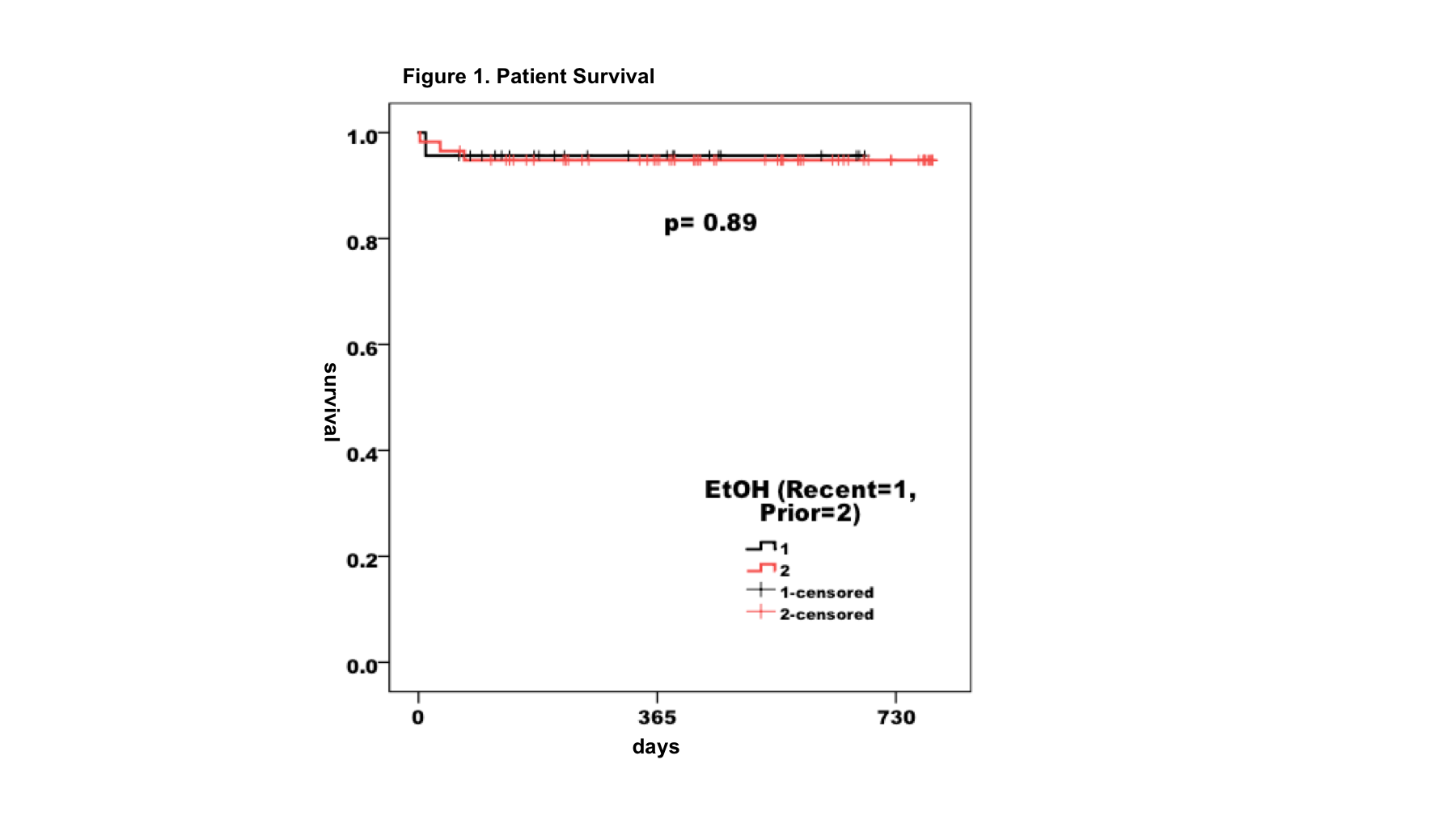The impact of “Six-month Rule” on liver transplant outcome in patients with alcohol related liver disease
Kenji Okumura1, Asad Azim1, Inkyu Lee1, Gregory Veillette1, Hiroshi Sogawa1, Devon John1, Thomas Diflo1, Roxana Bodin2, David Wolf2, Seigo Nishida1.
1Surgery, Westchester Medical Center / New York Medical College, Valhalla, NY, United States; 2Gastroenterology, Westchester Medical Center / New York Medical College, Valhalla, NY, United States
Purpose: Liver transplants due to alcohol related liver disease (ALD) have increased. Severe ALHep is associated with high mortality rate. Traditionally, being liver transplant candidate requires “six months of abstinence” from alcohol. However, the so-called “six-month rule” may not save some of life especially in severe ALHep patients. We validated the impact of the “six-month rule” on post-transplant outcomes.
Methods: We performed a retrospective analysis of patients who underwent liver transplant between January 2018 and December 2019 at our center. Patients who were under 18 years old and were undergoing re-transplantation were excluded. Patients were stratified into two groups: < six-months abstinence (recent drinker) and >six-months abstinence (prior drinker). Patients were strictly selected based on the following criteria: failure of medical management, strong social support by family and friends, having insights of ALD, commitment to lifelong adherence to alcohol abstinence and agreement by transplant committee. Postoperatively, we tested the patients with urine ethanol, urine ethyl glucuronide, urine ethyl sulfate, and blood phosphatidylethanol (PEth).
Results: Eighty patients underwent liver transplant during the study period. Forty-one patients (50%) were transplanted for ALD. Out of 40 patients, 19 patients (48%) were recent drinker and 21 patients (52%) were prior drinker. The mean age was significantly younger in recent drinker than prior drinker (47±9 vs 57±9, p=0.002). The mean MELD score in recent drinker was significantly higher than prior drinker (36±7 vs 27±10, p=0.003). In severe ALHep, MELD score was significantly higher than others in ALD (36±7 vs 29±9, p=0.018). One-year patient survival was 94% in recent drinker, 95% in past drinker and 94.5% in severe ALHep (p= NS) (Figure 1).

After transplant, 7 (37%) patients in recent drinker and 2 (10%) patients in past drinker had some consumption of alcohol (p=0.02). Out of 7 in recent drinker, 2 patients sustain alcohol relapse and 5 patients are under observation. Out of 2 in past drinker, 1 patient sustains alcohol and another patient is under observation.
Conclusions: Patient survival for ALD is equivalently good regardless of six-month rule. Liver transplantation can be life saving for some of recent drinker. The risk of relapse in recent drinker is higher than that of prior drinker, but the rate of sustaining drinking is no difference between each group. For patients with ALD, high surveillance and extra support after liver transplant are mandatory.
There are no comments yet...